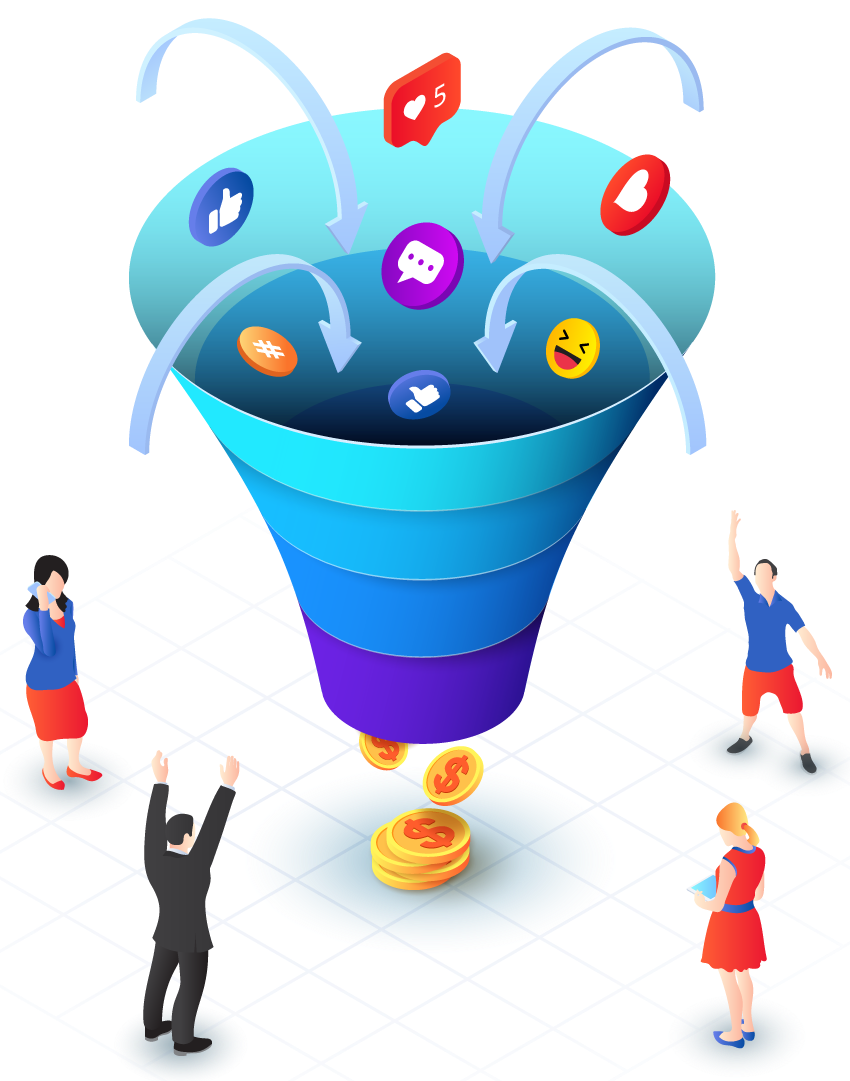Unlocking Sales Insights With Data-
Driven Funnels
When it comes to growth marketing, data is your friend. Using data to inform your
strategy and tactics helps you understand your audience better, so you can tailor
your messaging to their needs and interests. And the best way to get the most out of
your data is to make it accessible and actionable. That’s why it’s important to define
your funnel stages and KPIs, bake them into your product, then ensure that the right
people on your team have access to the information they need.
This process is called a “funnel analysis.
” To conduct a funnel analysis, marketers
use event tracking tools to identify bottlenecks in the customer journey. These tools
allow marketers to track user activities such as clicks, demo requests and deals
signed.
Once marketers have a clear picture of the conversion rate and time-to-convert for
each funnel stage, they can identify areas where users are dropping off. This data
can then be used to inform more strategic and proactive efforts to improve the sales
process.
Funnel analysis alone is not enough to pinpoint the root causes of bottlenecks,
however. In order to get a more detailed view, marketers need to pair their funnel
analysis with other analytics techniques such as heatmaps, session recordings and
user surveys.
For example, if your sales funnel analysis indicates that users are having trouble
with a specific feature, you might need to redesign the associated interface. This
might be as simple as moving the button placement or changing the copy, but if this
doesn’t work, it could require a more in-depth redesign that involves incorporating
usability testing and/or interviews with key users.
Ultimately, the goal of a data-driven funnel is to optimize the entire user experience
for your customers. This means addressing any issues identified during your funnel
analysis and continually optimizing to increase the likelihood of conversion.
There are many different ways to do this, but one way is to establish a culture of
product and growth transparency in your company. This allows everyone to be on
the same page when it comes to funnel definitions, KPIs and the processes that
should be in place to achieve those goals. It also allows individuals to make smart
product and growth decisions in the absence of direct guidance when needed.
Finally, it’s a good idea to have a centralized dashboard where key metrics are
reported and reviewed regularly. This way, anyone can see what’s working and
where the company is struggling so that they can adjust strategies accordingly.
Taking a data-driven approach to sales funnels is a great way to increase the
number of qualified leads and grow your business. By identifying opportunities,
personalizing your marketing materials and optimizing your funnel, you can make
sure your sales growth is being driven by the most important factors. Using data is
the only way to be certain that your growth efforts are on track.

Free Training video
How To Transform Your Online Business with Our Universal Sales Funnel Template
My Recent Posts
All-in-One Sales Automation Platform
Check out my recent post on all-in-one sales and marketing tools and what I think of it.
Sales Funnels
Check out my recent post on sales funnels and what I think about them. Are they still worth it?

The Same "about me" text you wrote on your about me page; you want to write it here or write an excerpt of it here. Just make sure it makes sense, and looks complete if you're going to write an excerpt. So delete this text and add yours on every article page.
VICTOR DELOSSANTOS
©Copyright 2025 VS DIRECT
224 W 35th St Ste 500 #2297
New York, NY 10001
